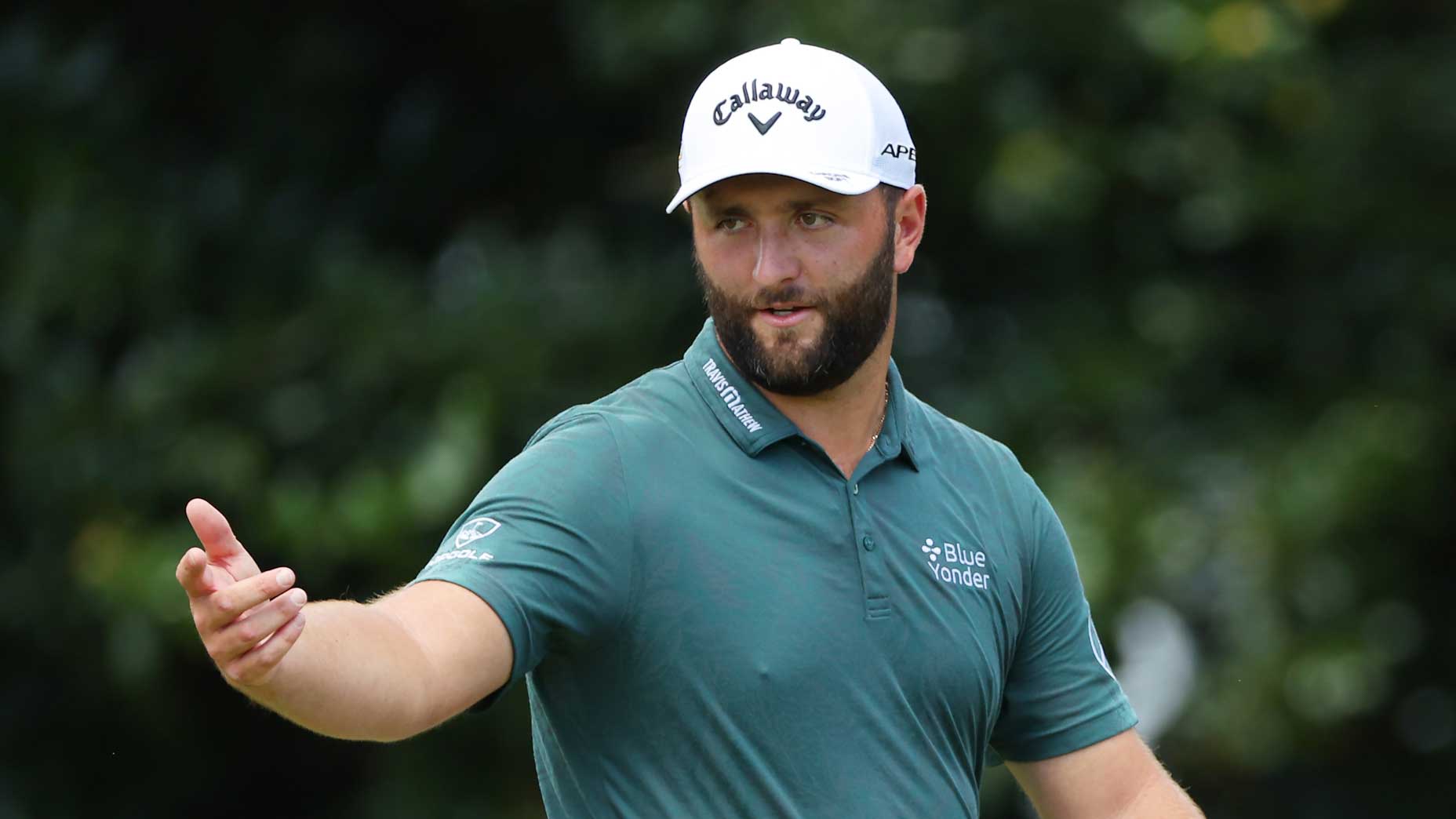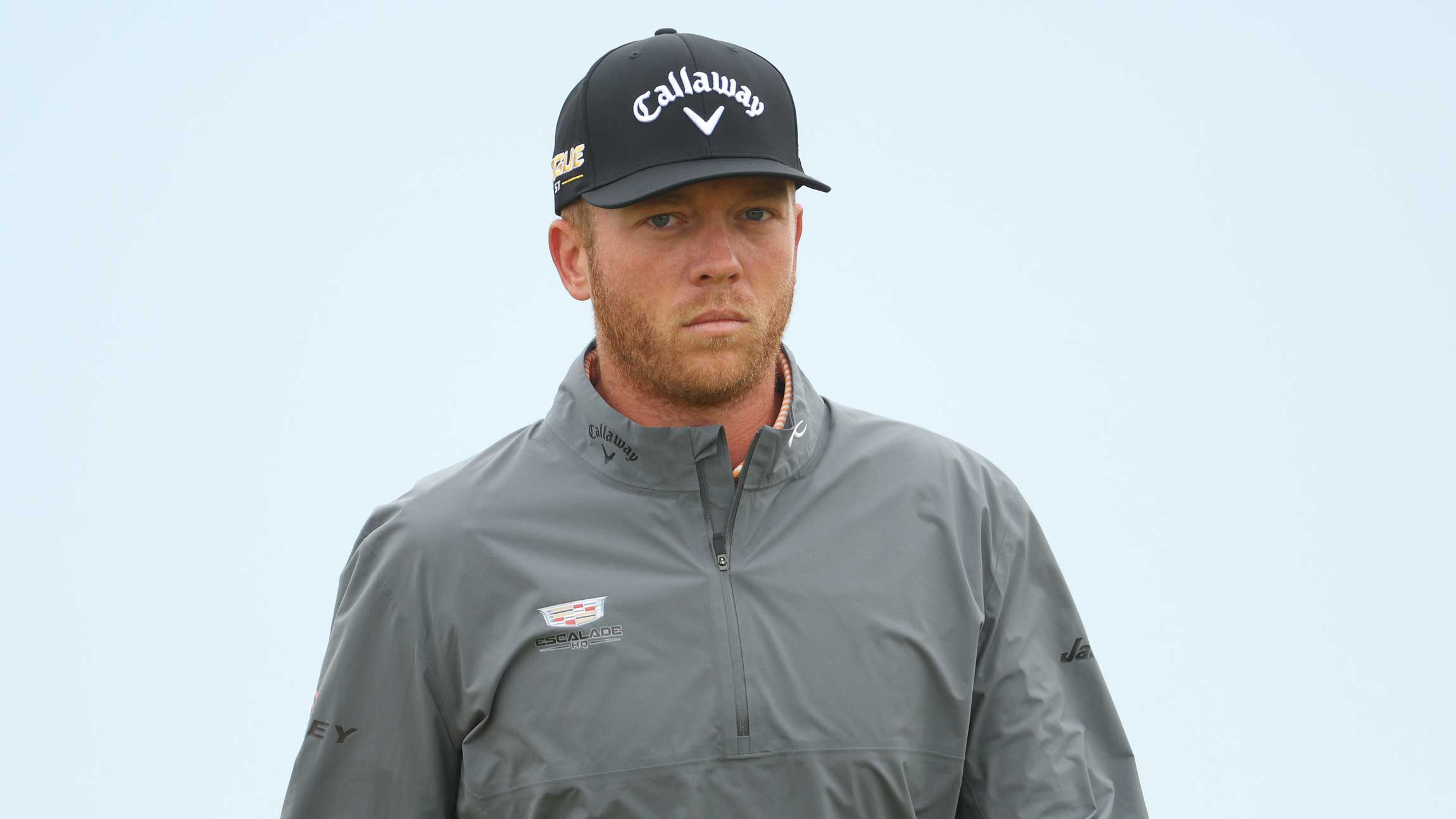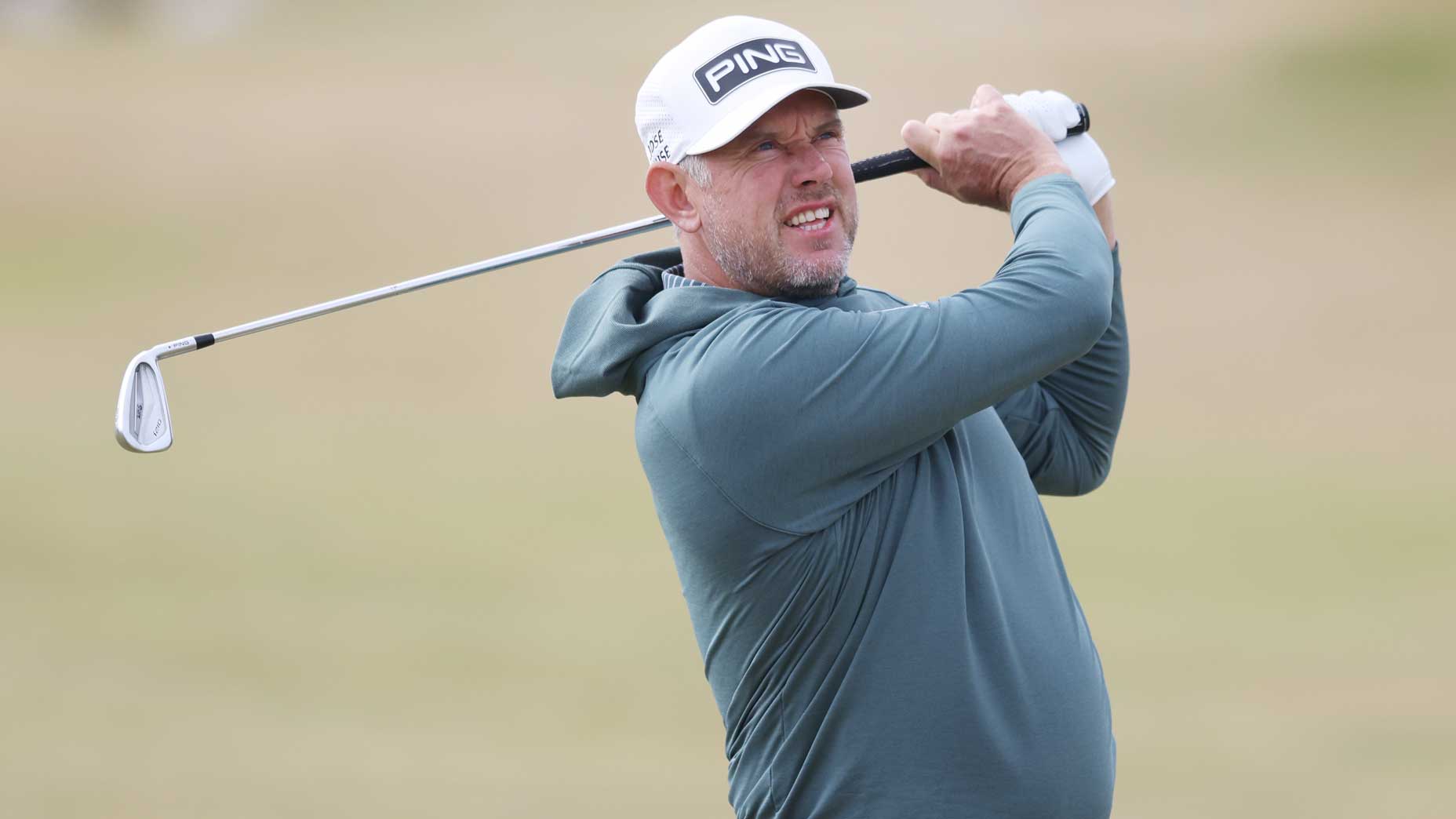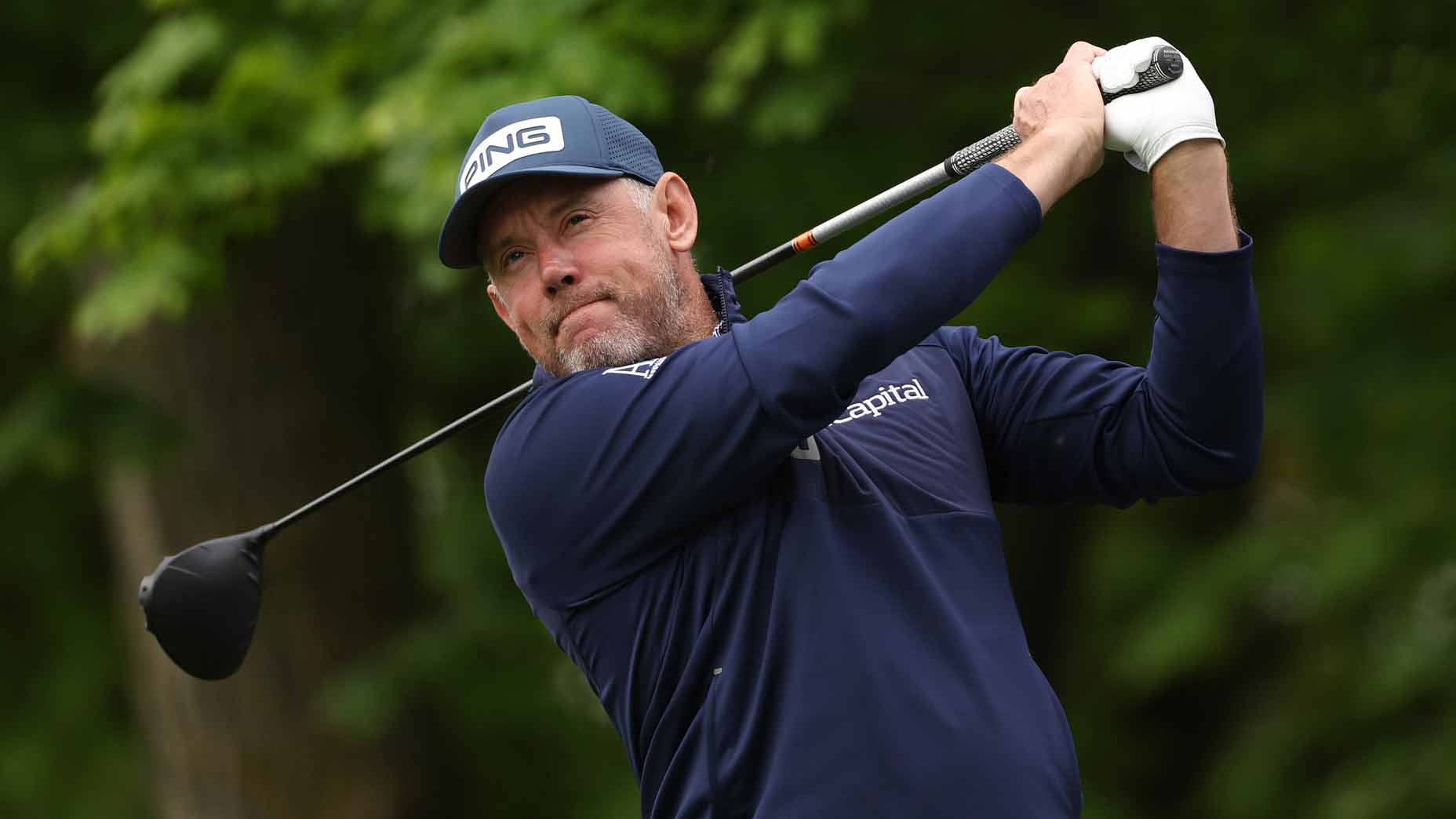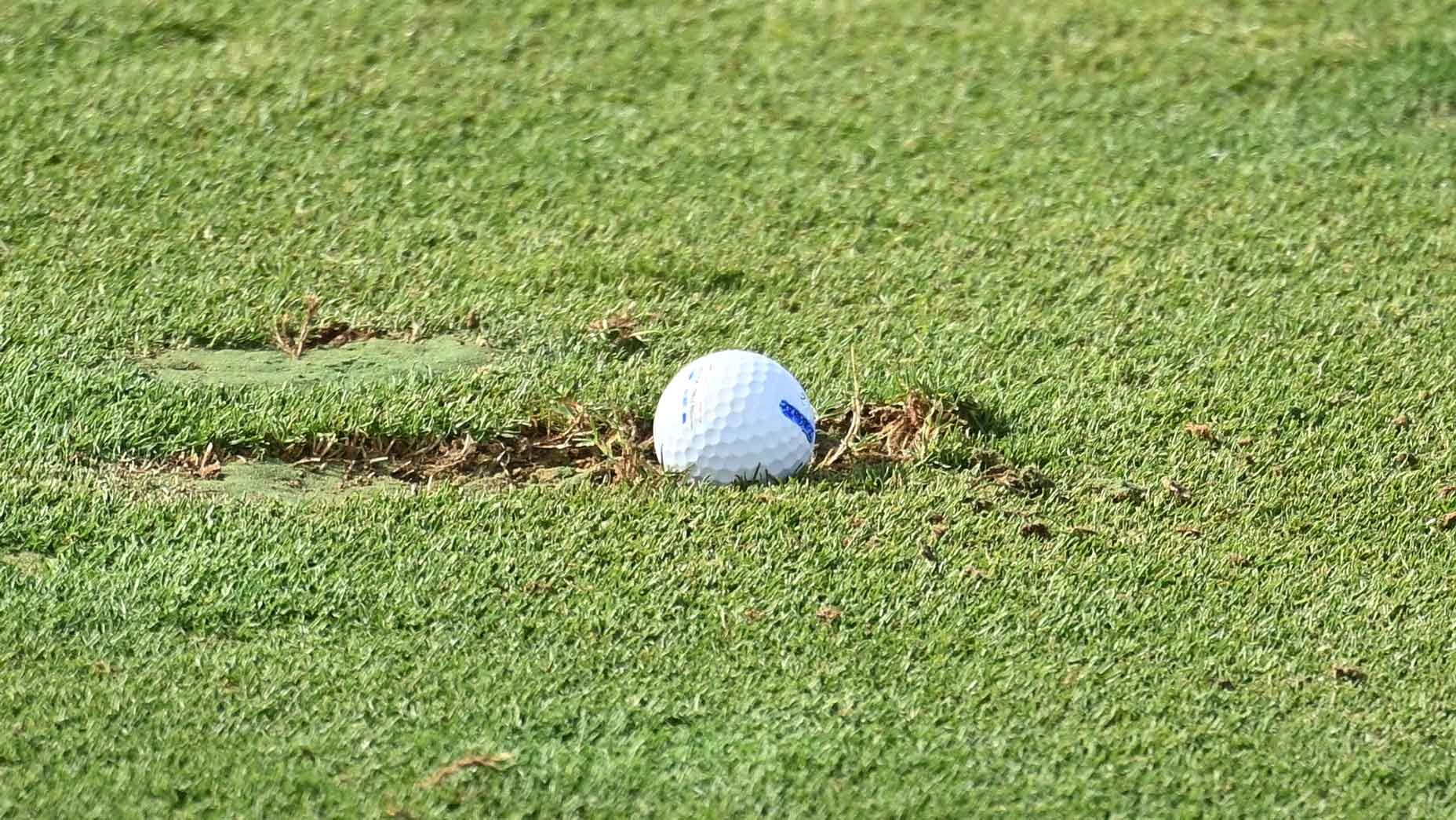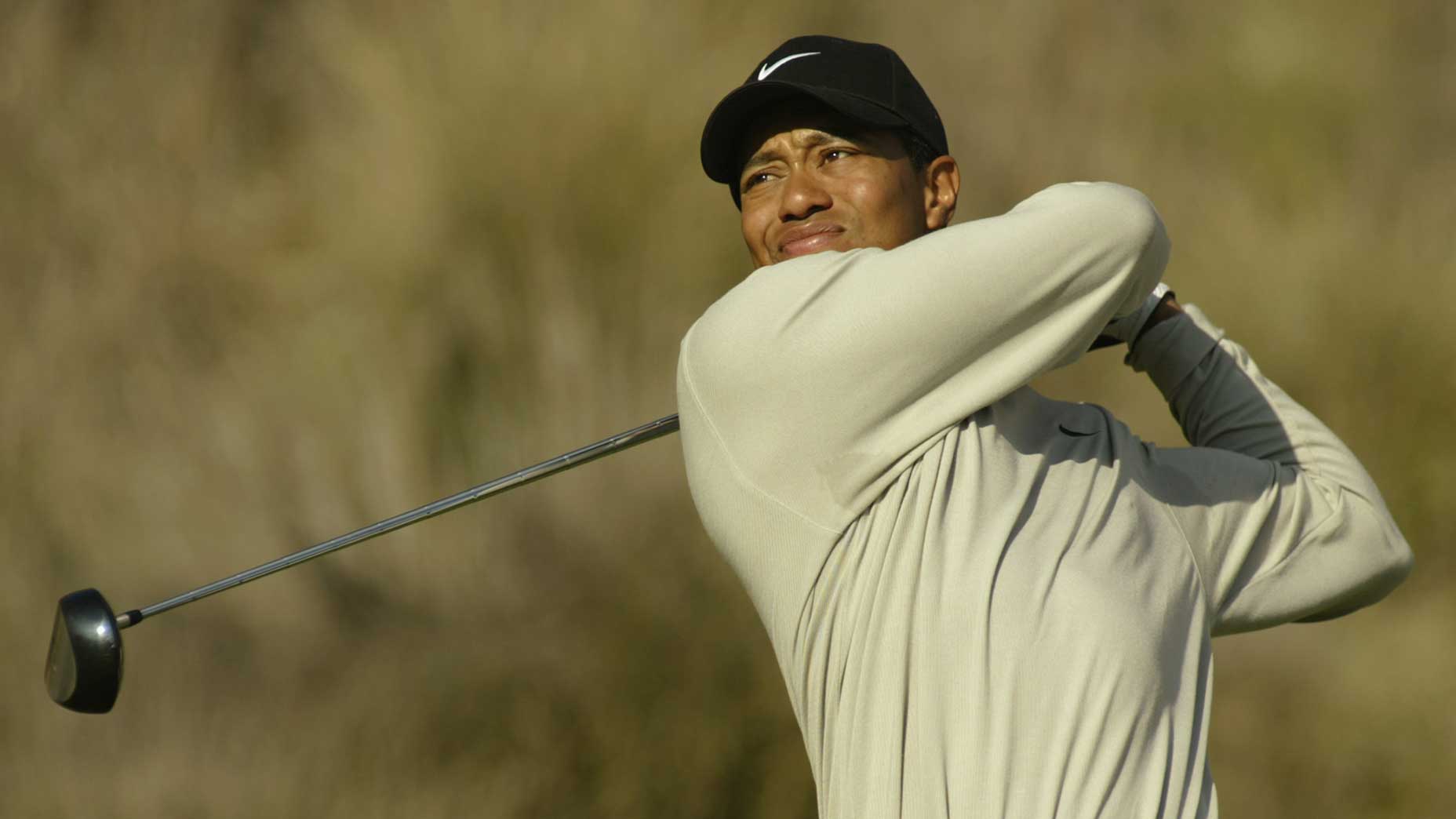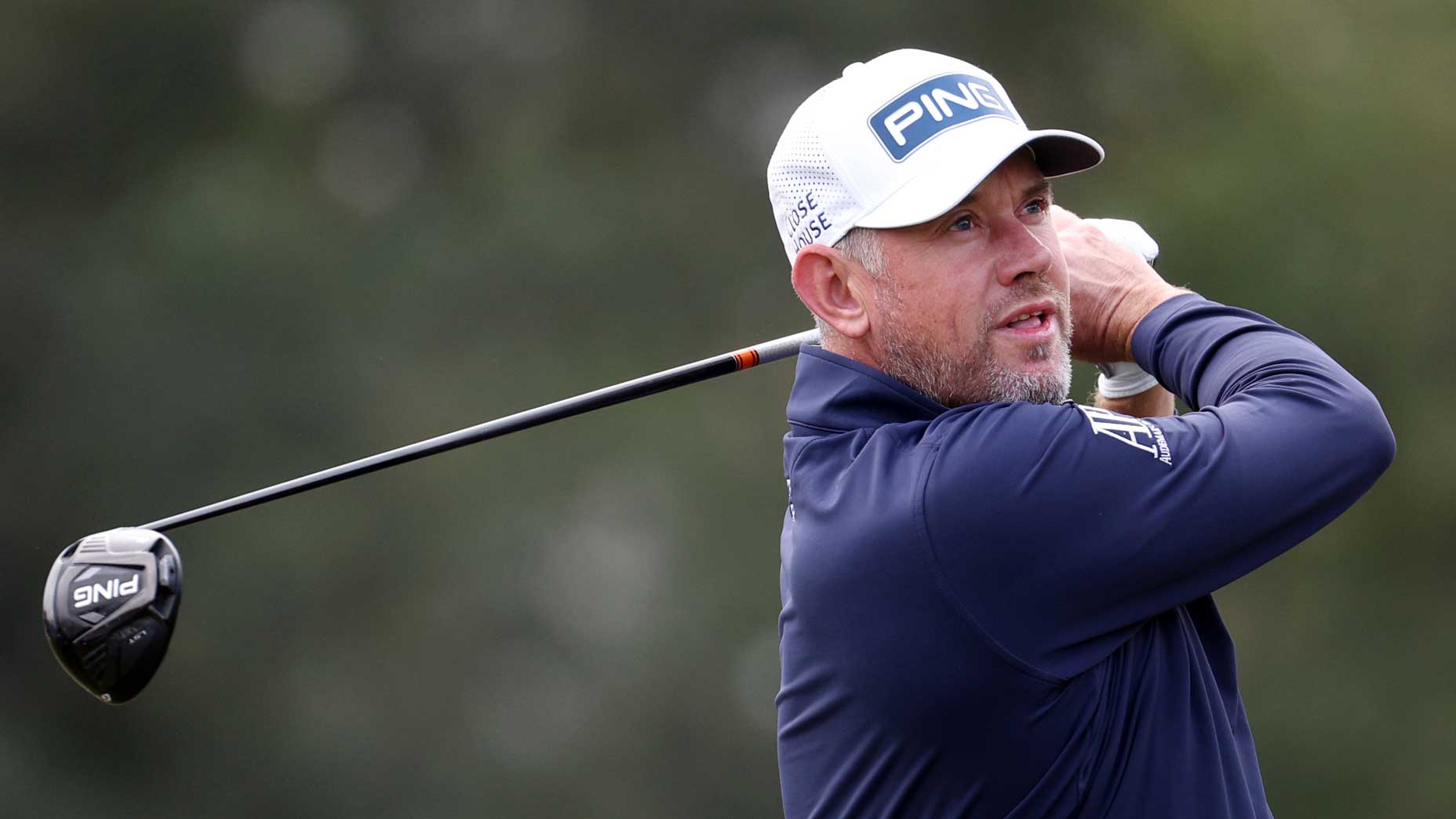I turned 48 in late April, and I’d say my golf is as good now as it has ever been. I might not have quite the firepower I once did, but I think my way better around the course and have a better attitude about the game. Tournament golf is not life and death. I figured something out: Nobody dies out there.
In 1998, when I was 25, I played with Tom Watson in the first two rounds of the U.S. Open. Tom was 48. He was limber and strong, he loved to play, he knew his swing and it repeated. He still played great golf. I like to think that I, at 48, can say the same things about myself. The ball doesn’t know how old you are.
Eleven years after that U.S. Open, at age 59, Watson was in a playoff for the 2009 Open Championship at Turnberry. I would love to follow in his footsteps. As an Englishman who grew up on the Open Championship, and who loves links golf, it was always special playing with Watson, who won the Claret Jug five times. I’d love to have my name on it.
Ten years ago, Darren Clarke, my friend and Ryder Cup playing partner, won the Open at Royal St. George’s. We tipped a few from the jug in his year with it. This year, the Open is back at Royal St. George’s. Any year I can play in the five majors is a great one, and I hope 2021 will be such a year: the Masters, the PGA Championship, the U.S. Open, the Open Championship — and the Ryder Cup. If I am on Padraig Harrington’s European team, he’ll be the 11th Ryder Cup captain I will have played for. Someday I hope I’ll be a Ryder Cup captain.
At Olympic, in ’98, Tiger was in our threesome for the first two rounds. Not that I remember that, but you can look up most anything these days. (There is, for instance, Britishhorseracing.com. You could say I’m a throwback touring pro. I like the racetrack, the pub, convertibles, wine with dinner, golf on off weeks. I like the life.) In Tiger’s first decade or so as a pro, he and I were often on the first tee together, at majors, at PGA Tour and overseas events, at Ryder Cups. Tournament organizers would put us in the same threesome for the first two rounds, and sometimes we played our way into the same pairings on Saturdays and Sundays.
One Sunday some people remember is the fourth round of the 2008 U.S. Open at Torrey Pines, where the U.S. Open will be played this year. Tiger and I were in the last group. Rocco Mediate was in the house at 1-under after 72 holes. Tiger and I both had birdie putts on 18 to tie Rocco and get in a Monday playoff. The crowd around the green was 10 rows deep, plus people leaning out of their hotel rooms and standing on tree limbs. It was intense. I hit a good putt that didn’t drop. Tiger’s did.
People ask me sometimes what I remember about Tiger from that day. Not much. When you’re contending, you’re focused on yourself. I knew there was something wrong with his leg. I saw him stop and wince. And that’s about it. I’m more apt to remember going for the green with my second shot on the par-5 13th. I made a 6. From the lie I had, I should have laid up.
I know that once you’ve done all the preparation and you’ve hit your ball, the result is in the lap of the gods.
I used to get a lot of questions about Tiger. We all did in Tiger’s first decade as a pro: Ernie Els, Vijay Singh, Davis Love, Phil Mickelson. I didn’t mind. Golf had never seen a player quite like him, and he generated a lot of interest in the game.
Now I’m getting questions about Bryson DeChambeau, after playing with him in the last twosome of the last round at the Arnold Palmer Invitational in early March and then doing the same thing a week later at the Players. I finished second both times. I doubt I ever made more prize money in back-to-back tournaments, $1 million at Bay Hill, $1.6 million at the Players. Thank you, PGA Tour. Every pro golfer wants to win, but getting those checks is great too.
Bryson and I get along well. I respect that he’s put an awful lot of work into his game and improved it. I don’t think people give him enough credit for adding muscle to his body, to challenging the notion of what a set of clubs should look like and what a swing should look like. It’s some leap of faith to take things as far as he has taken them. And he got better doing it. That’s by no means a given. His win last year at the U.S. Open at Winged Foot was astonishing for how far he was hitting it and for his short-game touch. He’s won a major. He’s shaking things up. He’s fun to watch.
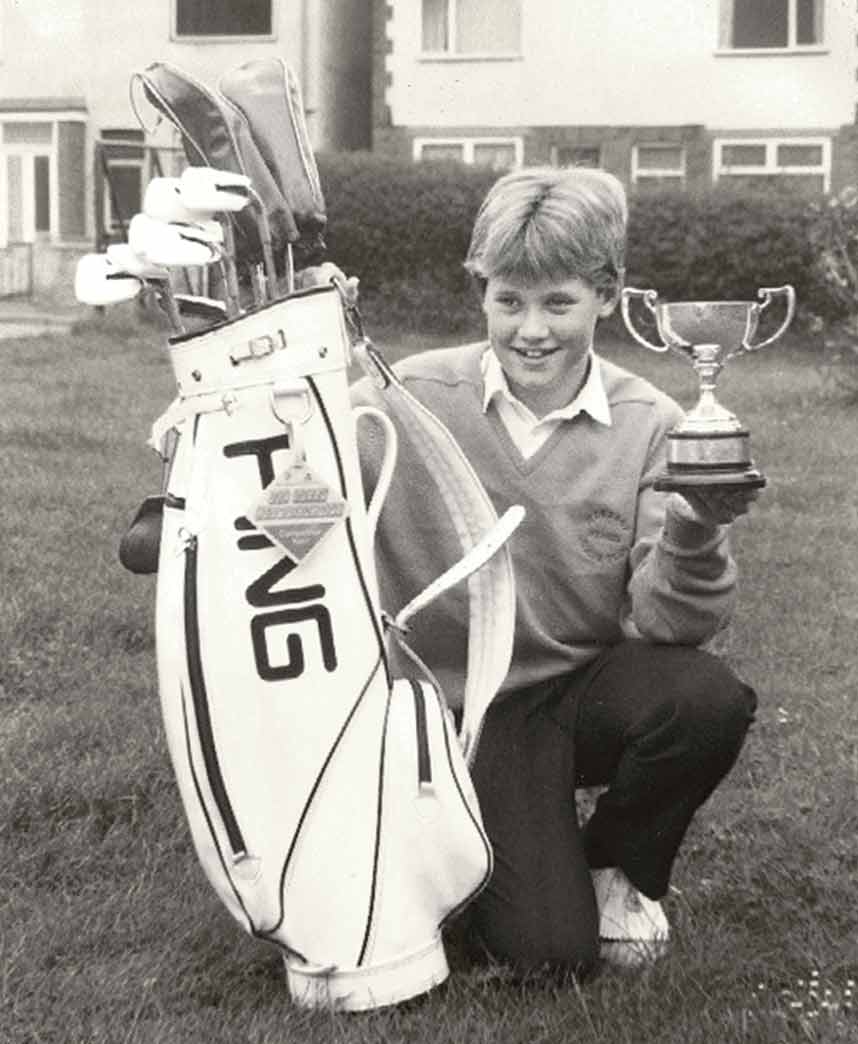
The players who have a real impact on the game are always fun to watch. Arnold Palmer was fun to watch. So was Seve Ballesteros, the Arnold Palmer of European golf. They were both loaded with charisma. They would walk in a room and every head would turn.
I met Arnold for the first time in ’98, at Bay Hill. (I always liked Bay Hill, a golf course where you have to keep your ball out of the water. I like courses where you have to be in control of your golf ball.) Ernie won that year. I believe I made an expensive triple on the last — must have dunked one in that lake. Ernie and I were in the locker room on that Sunday night, enjoying a beverage. Arnold sat down and joined us. “This is what it should be like, two guys having a drink when it’s all over,” Arnold said. He was such a powerful presence.
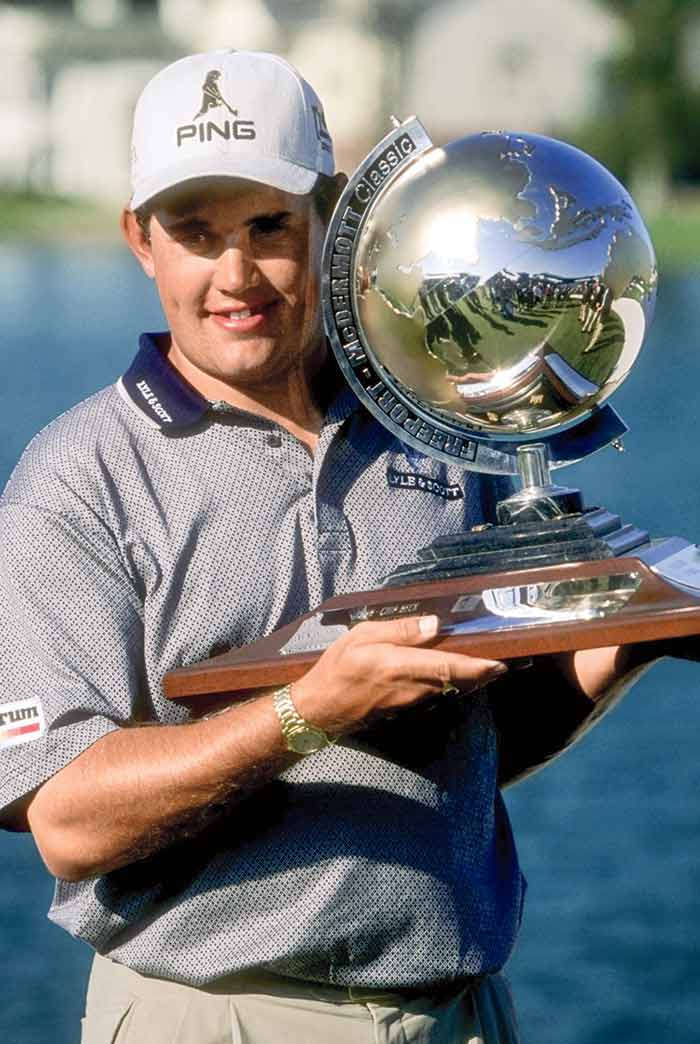
Seve was too. He was my first Ryder Cup captain, in 1997. He was all over the place, but inspiring. I don’t think anybody in golf ever had more magic in his hands. That made him a force in match play in particular. He could drive it 60 yards off-line and his opponents knew he wasn’t out of the hole.
When I got on the European Tour in 1994, Seve was still playing regularly. He once saw me in a practice bunker. I had a lob wedge in my hands. He said, “Why are you playing with that?” He got in the bunker with a 7-iron. He played three shots, lipping out twice and holing one of them. He couldn’t explain to a mere mortal how to do it. But he liked showing off and having fun.
Seve had a long line of caddies, including Billy Foster, who worked for me for years. We had 13 wins together, and nobody does a better imitation of Seve than Billy. Billy’s a real caddie. He’s going to get involved in every shot. That served me well for a long time, until it didn’t.
For the past few years I’ve had Helen Storey, first as my girlfriend, now as my fiancée, caddie for me at most of my events. (When she doesn’t, my son, Sam, will usually caddie for me.) On the course, Helen and I talk about our dinner plans and other important topics. Dinner motivates me. Helen is very fit, and she has helped me get into a regular work-out routine, which has been good for my golf. Nick Price and Gary Player told me years ago to take fitness more seriously. I guess it took a while — or maybe Helen — for the message to sink in.
On the course, with Helen out there with me, I take all the responsibility for my game. I found that I had become too reliant on Billy, on what he was thinking, on how he thought shots should be played. Now everything is on me, working out the yardage, figuring the wind and all the other things that go into every shot played. It occupies my mind, in a good way. When I walk into the shot, it’s with 100 percent commitment and focus.

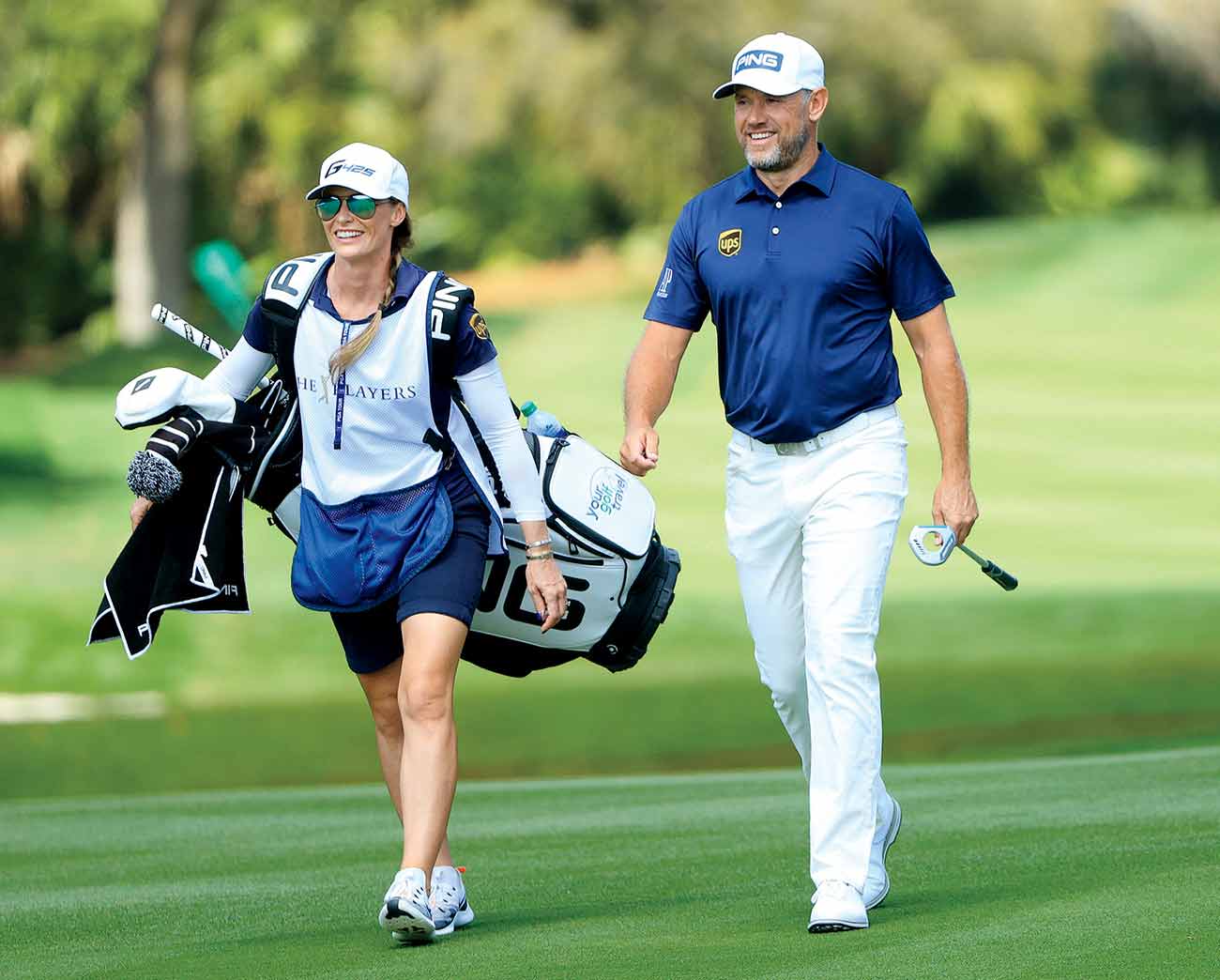
I’ve heard Helen say something like, “It’s interesting, watching his mind work out a shot. It’s lovely, just being out there together.” You’re not going to hear another caddie say anything like that! And I feel the same way, about being out there with Helen. She relaxes me.
And when Sam is out there with me, that’s special, too, but in a different way. He’s more into the golf side of things, not the dinner plans. Earlier this year, Sam and I made a two-day trip to Augusta National. We stayed in Butler Cabin, toured the clubhouse, played the par-3 course. (Sam’s sister, my daughter, Poppy, has also caddied for me — as a very young girl at the Masters Par-3 Contest.) Seeing the nooks and crannies of Augusta National wouldn’t mean much for Helen, but it was wonderful for Sam and me. For those of us lucky enough to do it, Augusta National is the ultimate dads-and-lads trip. Sam has everything in front of him, as does Poppy.
I was 24 that day I was with Ernie and Arnold at Bay Hill. Half my life ago. I know things now I didn’t know then. But you never stop learning. Things always crop up. You always find yourself being surprised by something. You think to yourself, He’s got a point. Or That’s insightful, what she’s saying.
In my golf, at 24, I worried too much about the consequences of where shots were going to finish. Now I am twice that age and I know that once you’ve done all the preparation and you’ve hit your ball, the result is in the lap of the gods. And you wouldn’t want it any other way.





